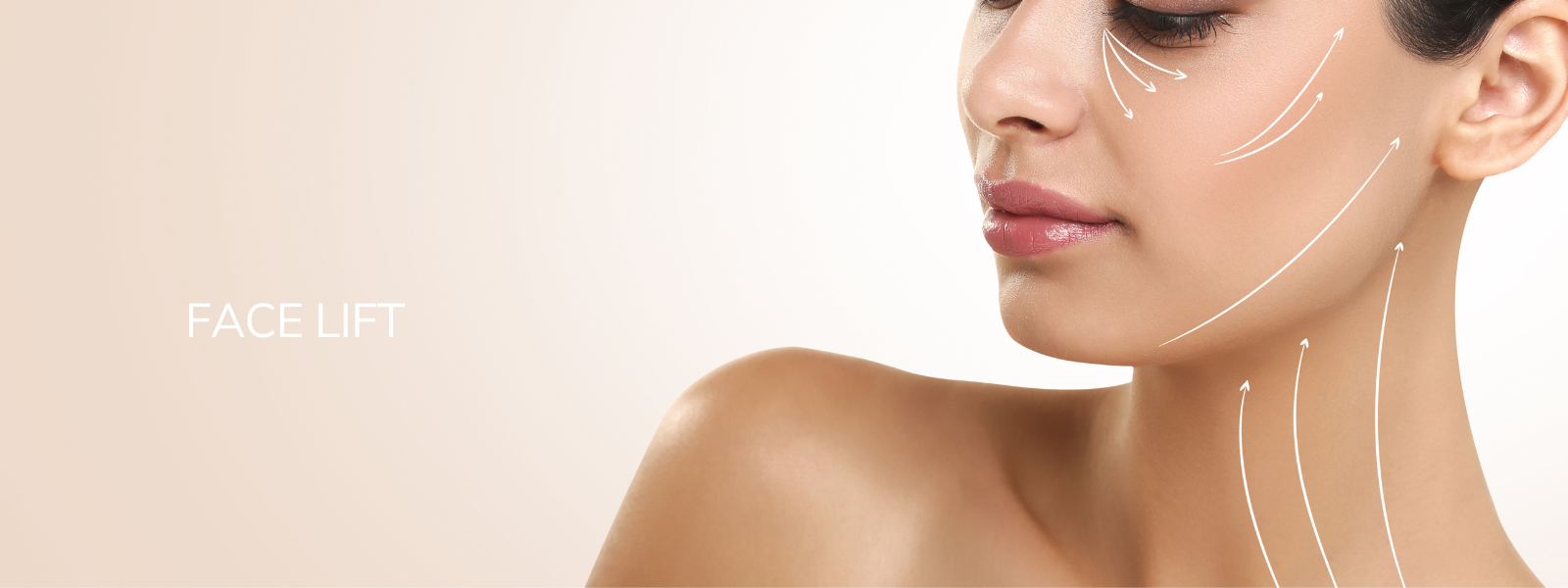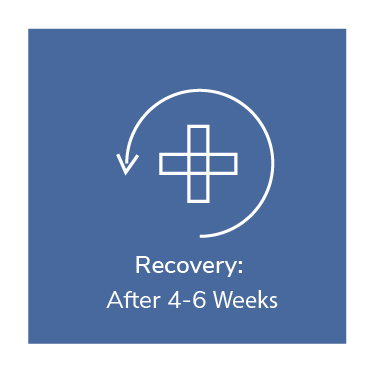




















WHAT IS A Face Lift?
During the ageing process skin can lose its elasticity and fatty tissue under the skin may start to shrink in volume. This could cause skin to cease to follow the contour of the face so closely and therefore become loose. This process becomes more noticeable in the cheek area at the bulk of the cheek, resulting in a fold of tissue from the side of the nose to below the jaw line, causing a heavy jowl.
The Rhytidectomy procedure is the removal of loose skin and tightening of sagging muscles. Many creams, medications and facial exercises have been used as anti-ageing methods; however none of these significantly affect the ageing process. The most effective way of significantly altering an unfavourable appearance is to have this kind of surgery.
There are a variety of corrective procedures available to counteract these changes. Our experienced cosmetic surgeons will explain the appropriate procedure for you at the time of consultation. In general, the facelift procedure involves the removal of excess skin from the cheek, chin and neck area, and the operation is carried out, usually under general anaesthetic, by one of our highly skilled surgeons. There are a number of adoptive procedures but in principle the incision begins in the temple, behind the hairline which runs down in front of the ear, and extends along the inside of the hairline towards the back of the head. The resulting scars fade in time to become barely visible.
A facelift, also known as rhytidectomy, is a surgical procedure that aims to rejuvenate the face and neck by addressing signs of aging, such as sagging skin, deep creases, and jowls. It involves lifting and tightening the underlying facial muscles and removing excess skin to create a more youthful and refreshed appearance. Here are the key aspects of a facelift procedure:
Incision Placement: The specific incision pattern used during a facelift can vary based on individual needs and surgical techniques. Commonly used incisions include those that start in the hairline at the temples, extend around the ear, and sometimes continue into the lower scalp or neck. Incisions are strategically placed to minimize visible scarring and allow access to the underlying facial tissues.
Tissue Repositioning: Once the incisions are made, the surgeon lifts and repositions the underlying facial muscles, also known as the SMAS (superficial musculoaponeurotic system). This helps restore the firmness and contour of the face. Excess fat may be sculpted or redistributed to achieve a more balanced appearance.
Skin Redraping and Excision: After repositioning the underlying tissues, the surgeon redrapes the skin over the newly tightened facial structures. Excess skin is then carefully trimmed or excised to achieve a smoother and more youthful appearance. The incisions are closed with sutures or other techniques to ensure optimal healing.
Additional Procedures: Depending on individual needs and goals, additional procedures may be combined with a facelift to enhance overall results. These may include eyelid surgery (blepharoplasty), neck lift, brow lift, or fat grafting to restore volume to specific areas of the face.
Recovery and Results: After the surgery, there will be a period of recovery. Swelling, bruising, and mild discomfort are common, but these symptoms can be managed with pain medication and proper post-operative care. The exact recovery time varies for each individual, but most people can return to regular activities within a few weeks, with noticeable improvements in facial appearance. The final results become more apparent as swelling subsides, typically within a few months.
The recovery process after a facelift can vary from person to person, but here are some general aspects to consider:
Initial Recovery Period: Immediately after the surgery, you will be monitored in a recovery area until you are fully awake from anesthesia. You may experience some grogginess, discomfort, or nausea during this time. Bandages or dressings may be applied to protect the incision sites.
Swelling and Bruising: Swelling and bruising are common after a facelift and can last for several weeks. Applying cold compresses and keeping your head elevated can help minimize swelling. Your surgeon may also recommend taking prescribed medications or using topical ointments to aid in the reduction of swelling and bruising.
Pain Management: Some discomfort, tightness, or mild pain in the treated areas is normal after a facelift. Your surgeon will prescribe pain medication to help manage any discomfort during the initial recovery period. It’s important to follow the prescribed dosage and instructions.
Drainage Tubes: In some cases, small drainage tubes may be placed under the skin during surgery to collect any excess fluid or blood. These tubes are typically removed within a day or two after the procedure.
Post-operative Instructions: Your surgeon will provide specific post-operative instructions on how to care for the incision sites, when to change dressings, and how to clean the area. It’s important to follow these instructions carefully to promote proper healing and reduce the risk of infection.
Stitches and Suture Removal: Depending on the type of sutures used, they may be dissolvable or require removal. Your surgeon will advise you on when to expect suture removal, which is typically within the first week or two after the surgery.
Return to Normal Activities: Most people can expect to resume normal daily activities, such as light work or social engagements, within one to two weeks after a facelift. However, strenuous activities, heavy lifting, and intense exercise should be avoided for several weeks to allow for proper healing.
Follow-up Appointments: It is important to attend all scheduled follow-up appointments with your surgeon. These appointments allow them to monitor your healing progress, remove any remaining sutures or dressings, and assess the overall results of the surgery. If you have any concerns or questions during the recovery period, don’t hesitate to reach out to your surgeon.
After undergoing a facelift, it is normal to experience some side effects during the recovery period. While everyone’s experience may vary, here are some common side effects that you can expect:
Swelling: Swelling is a common side effect after a facelift. It typically peaks within the first few days after the surgery and gradually subsides over several weeks. Keeping your head elevated, applying cold compresses, and following your surgeon’s instructions can help minimize swelling.
Bruising: Bruising around the treated areas is also common and may appear in varying degrees of severity. The bruising usually resolves within a few weeks but can take longer in some cases. Avoiding blood-thinning medications, following post-operative care instructions, and applying arnica or other recommended topical treatments can help reduce bruising.
Discomfort or Pain: Some discomfort, tightness, or mild pain in the treated areas is to be expected after a facelift. Your surgeon will prescribe pain medication to manage any discomfort during the initial recovery period. It is important to take the medication as directed and report any severe or persistent pain to your surgeon.
Numbness or Altered Sensation: Temporary numbness or altered sensation in the face or neck area is common after a facelift. This occurs due to the disruption of sensory nerves during surgery. Sensation usually returns gradually over several weeks or months, but in rare cases, it may persist longer or be permanent.
Tightness or Tension: You may experience a sensation of tightness or tension in the facial and neck area after a facelift. This is a normal part of the healing process as the skin adjusts to its new position. The feeling of tightness typically improves over time as the tissues heal and settle.
Scarring: Incision lines are an inevitable part of facelift surgery. However, your surgeon will make every effort to place the incisions discreetly and minimize visible scarring. Over time, the incision lines tend to fade and become less noticeable. Proper wound care and avoiding sun exposure can help promote optimal healing and minimize scar visibility.
Fatigue: It is common to experience fatigue or a lack of energy during the initial stages of recovery. This is a normal response to the surgical procedure and anesthesia. It is important to rest and allow your body to heal during this time.
Emotional Changes: It is not uncommon to experience emotional ups and downs during the recovery process. This can be attributed to the physical changes, discomfort, or temporary alteration of appearance. It is essential to maintain realistic expectations and keep open communication with your surgeon to address any concerns or emotional issues that may arise.






WHAT they say
Before the treatment I was always bullied about my lopsided face and bad skin condition. Thank you!
virginia hudson
Beauty has so many forms, and I think the most beautiful thing is confidence and loving yourself.
Kiesza
I had the most amazing experience, from the moment I walked in to the moment I walked out I was cared for with such compassion. All the nurses were amazing, they tucked me in bed, they poured my tea, I cannot fault them. It was like being looked after by family. My anesthetist and surgeon explained everything in detail, I knew exactly what to expect. I would definitely stay here again.
Laura
I was really pleased with the care and treatment that I received at Welbeck Hospital. My surgeon was kind and informative and explained the entire procedure to me. I recovered completely fast. I would recommend it to everyone.
Eva Elliot
FAQS
The ideal age for a facelift can vary depending on individual factors such as genetics, lifestyle, and overall facial aging. Generally, people in their 40s to 60s tend to benefit most from a facelift. However, the decision to undergo a facelift should be based on individual concerns and goals rather than age alone.
While a facelift can address sagging skin and improve the overall appearance of the face, it is not specifically designed to eliminate all wrinkles and lines. Additional treatments such as injectables (e.g., Botox, dermal fillers) or skin resurfacing procedures may be recommended to target specific wrinkles and lines.
The duration of a facelift procedure can vary depending on the complexity of the surgery and any additional procedures performed. On average, the surgery takes around 2 to 4 hours. Your surgeon will provide a more accurate estimate based on your specific case.
Facelift surgery is commonly performed under general anesthesia, ensuring your comfort and safety throughout the procedure. Your anesthesia options will be discussed with you during your consultation, and the appropriate choice will be made based on your specific needs.
Incisions made during a facelift are strategically placed to minimize visible scarring. They are typically concealed within the natural contours of the face and hairline. With proper wound care and the passage of time, the scars tend to fade and become less noticeable.
The recovery time varies among individuals, but most people can return to work and regular activities within 10 to 14 days after a facelift. Strenuous activities and intense exercise should be avoided for several weeks to allow for proper healing.
A facelift provides long-lasting results, typically lasting for several years. However, the natural aging process continues, and over time, additional signs of aging may develop. Maintaining a healthy lifestyle, protecting your skin from sun exposure, and following a proper skincare regimen can help prolong the results.
As with any surgical procedure, there are potential risks and complications, although they are generally rare. These may include infection, bleeding, adverse reactions to anesthesia, scarring, nerve damage, asymmetry, or unsatisfactory aesthetic outcomes. It is important to discuss the potential risks with your surgeon and follow their pre- and post-operative instructions.







